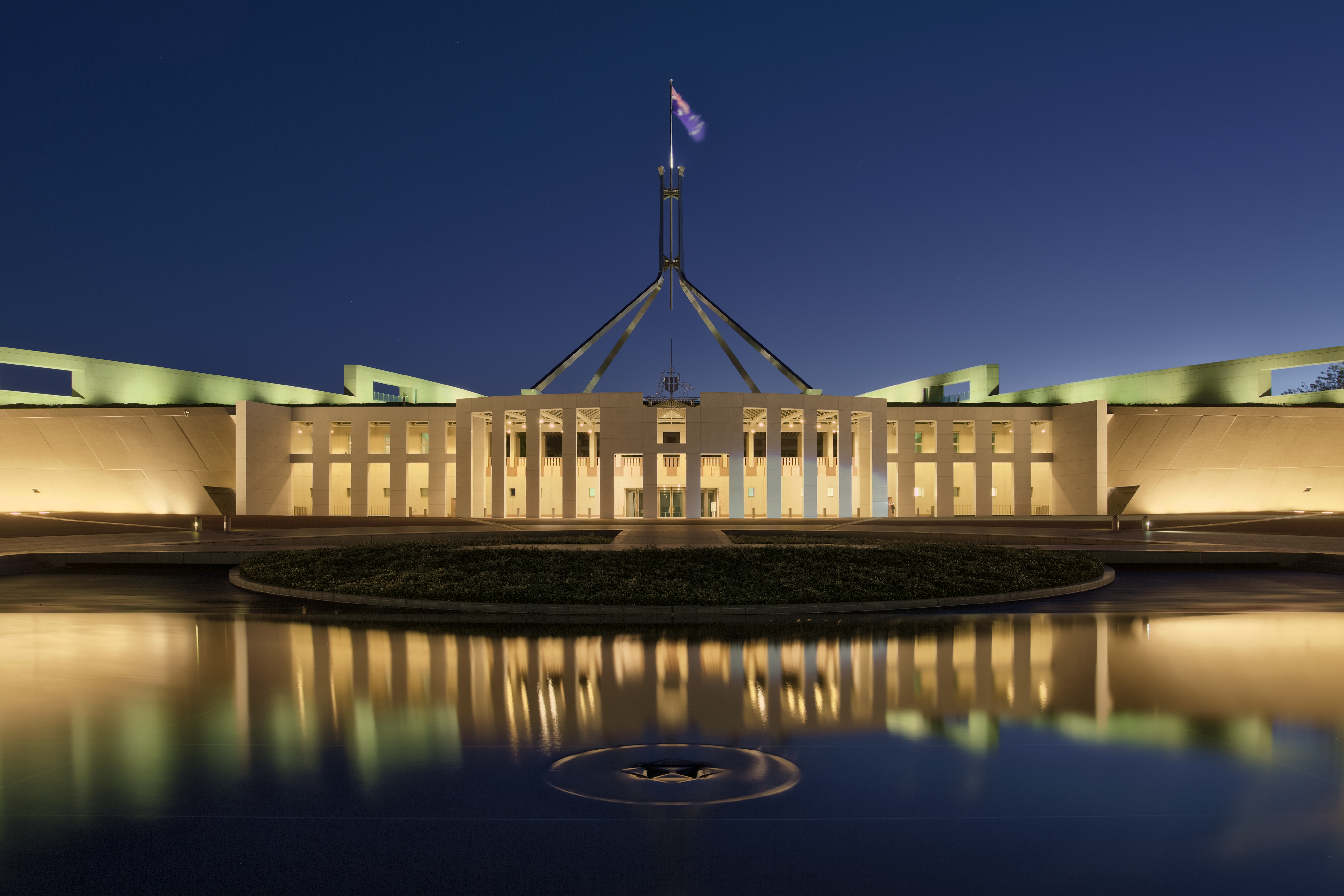|
1974 Australian Referendum (Local Government Bodies)
The ''Constitution Alteration (Local Government Bodies) Bill 1974'', (Cth). was an unsuccessful proposal to alter the Australian Constitution to allow the Commonwealth to grant financial assistance to local government bodies, and to borrow money on their behalf. It was put to voters for approval in a referendum held on 18 May 1974. Question ''Proposed law entitled "An Act to alter the Constitution to enable the Commonwealth to borrow money for, and to grant financial assistance to, local government bodies".'' ''Do you approve the proposed law?'' The proposal was to insert into section 51 that the Parliament have power to make laws with respect to: :(ivA.) The borrowing of money by the Commonwealth for local government bodies And to add a new section 96A :96A. The Parliament may grant financial assistance to any local government body on such terms and conditions as the Parliament thinks fit. Results See also *Politics of Australia *History of Australia The history ... [...More Info...] [...Related Items...] OR: [Wikipedia] [Google] [Baidu] |
Australian Constitution
The Constitution of Australia (or Australian Constitution) is a constitutional document that is supreme law in Australia. It establishes Australia as a federation under a constitutional monarchy and outlines the structure and powers of the Australian government's three constituent parts, the executive, legislature, and judiciary. The constitution was drafted between 1891 and 1898, through a series of conventions conducted by representatives of the six self-governing British colonies in Australia. The final draft was then approved in a set of referendums from 1898 to 1900. The British government objected to some elements of the final draft, but a slightly modified form was enacted as section 9 of the ''Commonwealth of Australia Constitution Act 1900'', an act of the Parliament of the United Kingdom. The act was given royal assent on 9 July 1900, was proclaimed on 17 September 1900, and entered into force on 1 January 1901. The constitution gave the six colonies the status ... [...More Info...] [...Related Items...] OR: [Wikipedia] [Google] [Baidu] |
1974 Australian Referendum
__NoTOC__ The 1974 Australian referendum was held on 18 May 1974. It contained four referendum questions. The referendum was held in conjunction with the 1974 federal election. Results in detail Simultaneous Elections :''This section is an excerpt from 1974 Australian referendum (Simultaneous Elections) § Results'' Mode of Altering the Constitution :''This section is an excerpt from 1974 Australian referendum (Mode of Altering the Constitution) § Results'' Democratic Elections :''This section is an excerpt from 1974 Australian referendum (Democratic Elections) § Results'' Local Government Bodies :''This section is an excerpt from 1974 Australian referendum (Local Government Bodies) § Results'' See also *Referendums in Australia *Politics of Australia *History of Australia References Further reading * * . * Australian Electoral Commission (2007) Referendum Dates and Results 1906 – Present' AEC, Canberra. {{DEFAULTSORT:Australian Referendum 1974 1974 ... [...More Info...] [...Related Items...] OR: [Wikipedia] [Google] [Baidu] |
Section 51 Of The Constitution Of Australia
Section 51 of the Constitution of Australia enumerates the legislative powers granted to Federal Parliament by the Australian States at Federation. The list contains 39 subsections, each referred to as a 'head of power' under which the parliament is empowered to make laws. The section is not an exhaustive list, as the federal parliament is authorized to enact legislation outside of those topics by certain other sections in the Constitution, such as sections 52 and 128. Australian States may still enact legislation upon the topics in section 51; but Federal law prevails to the extent of any conflict of laws. Powers of the Parliament Federation was intended to address problems caused by having the separate colonies on the one continent. Section 51 therefore encompasses a group of powers (known as heads of power) which reflect what powers the Commonwealth was viewed as needing to solve those problems. The most important heads of power in terms of supporting contemporary Common ... [...More Info...] [...Related Items...] OR: [Wikipedia] [Google] [Baidu] |
Politics Of Australia
The politics of Australia take place within the framework of a federal parliamentary constitutional monarchy. Australia has maintained a stable liberal democratic political system under its Constitution, one of the world's oldest, since Federation in 1901. Australia is the world's sixth oldest continuous democracy and largely operates as a two-party system in which voting is compulsory. Australia is also a federation, where power is divided between the federal government and the states and territories. The federal government is separated into three branches: File:Au_gov_chart.svg, center, 640px, Structure of the Government of Australia, alt=A high level diagram of the structure of the Government of Australia, the three branches, legislative, executive, and judicial. rect 575 6 1175 56 Constitution of Australia rect 575 191 1175 241 Governor General of Australia rect 125 341 425 391 Legislative Branch rect 725 341 1025 391 Executive Branch rect 1325 341 1625 391 Judic ... [...More Info...] [...Related Items...] OR: [Wikipedia] [Google] [Baidu] |
History Of Australia
The history of Australia is the story of the land and peoples of the continent of Australia. People first arrived on the Australian mainland by sea from Maritime Southeast Asia between 50,000 and 65,000 years ago, and penetrated to all parts of the continent, from the rainforests in the north, the deserts of the centre, and the sub-Antarctic islands of Tasmania and Bass Strait. The artistic, musical and spiritual traditions they established are among the longest surviving such traditions in human history. The first Torres Strait Islanders – ethnically and culturally distinct from the Aboriginal people – arrived from what is now Papua New Guinea around 2,500 years ago, and settled in the islands of the Torres Strait and the Cape York Peninsula forming the northern tip of the Australian landmass. The first known landing in Australia by Europeans was in 1606 by Dutch navigator Willem Janszoon. Later that year, Spanish explorer Luís Vaz de Torres sailed through, and navig ... [...More Info...] [...Related Items...] OR: [Wikipedia] [Google] [Baidu] |
Parliamentary Library Of Australia
The Parliamentary Library of Australia (or Commonwealth Parliamentary Library) is the library of the Parliament of Australia, administered by its Department of Parliamentary Services. It provides library services to elected officials, namely members of the Senate and House of Representatives, as well as their staff, parliamentary committees, the Governor-General of Australia, and the staff of parliamentary departments. History The library was established in 1901, the year of the federation of the Commonwealth of Australia. Control of the new library was controversial as the fledgling parliament was located in Melbourne where the Victorian premier and the library committee of the State Library of Victoria sought to influence the control and management of the library. From 1923 the library used two names describing the two roles and two collections ''Commonwealth Parliament Library'' which designated the parliamentary collection and ''Commonwealth National Library'' to designate th ... [...More Info...] [...Related Items...] OR: [Wikipedia] [Google] [Baidu] |
1974 In Australia
The following lists events that happened during 1974 in Australia. Incumbents *Monarch – Elizabeth II *Governor-General – Sir Paul Hasluck (until 11 July), then Sir John Kerr *Prime Minister – Gough Whitlam **Deputy Prime Minister – Lance Barnard (until 12 June), then Jim Cairns **Opposition Leader – Billy Snedden * Chief Justice – Sir Garfield Barwick State and Territory Leaders *Premier of New South Wales – Sir Robert Askin **Opposition Leader – Neville Wran *Premier of Queensland – Joh Bjelke-Petersen **Opposition Leader – Jack Houston (until 1 July), then Perc Tucker (until 7 December), then Tom Burns *Premier of South Australia – Don Dunstan **Opposition Leader – Bruce Eastick *Premier of Tasmania – Eric Reece **Opposition Leader – Max Bingham *Premier of Victoria – Rupert Hamer **Opposition Leader – Clyde Holding *Premier of Western Australia – John Tonkin (until 8 April), then Sir Charles Court **Opposition Leader – Sir Charles C ... [...More Info...] [...Related Items...] OR: [Wikipedia] [Google] [Baidu] |
1974 Referendums
Major events in 1974 include the aftermath of the 1973 oil crisis and the resignation of President of the United States, United States President Richard Nixon following the Watergate scandal. In the Middle East, the aftermath of the 1973 Yom Kippur War determined politics; following List of Prime Ministers of Israel, Israeli Prime Minister Golda Meir's resignation in response to high Israeli casualties, she was succeeded by Yitzhak Rabin. In Europe, the Turkish invasion of Cyprus, invasion and occupation of northern Cyprus by Turkey, Turkish troops initiated the Cyprus dispute, the Carnation Revolution took place in Portugal, and Chancellor of Germany, Chancellor of West Germany Willy Brandt resigned following an Guillaume affair, espionage scandal surrounding his secretary Günter Guillaume. In sports, the year was primarily dominated by the 1974 FIFA World Cup, FIFA World Cup in West Germany, in which the Germany national football team, German national team won the championshi ... [...More Info...] [...Related Items...] OR: [Wikipedia] [Google] [Baidu] |
Constitutional Referendums In Australia
A constitution is the aggregate of fundamental principles or established precedents that constitute the legal basis of a polity, organisation or other type of Legal entity, entity and commonly determine how that entity is to be governed. When these principles are written down into a single document or set of legal documents, those documents may be said to embody a ''written constitution''; if they are encompassed in a single comprehensive document, it is said to embody a ''codified constitution''. The Constitution of the United Kingdom is a notable example of an ''uncodified constitution''; it is instead written in numerous fundamental Acts of a legislature, court cases or treaties. Constitutions concern different levels of organizations, from Sovereign state, sovereign countries to Company, companies and unincorporated Club (organization), associations. A treaty which establishes an international organization is also its constitution, in that it would define how that organiza ... [...More Info...] [...Related Items...] OR: [Wikipedia] [Google] [Baidu] |





